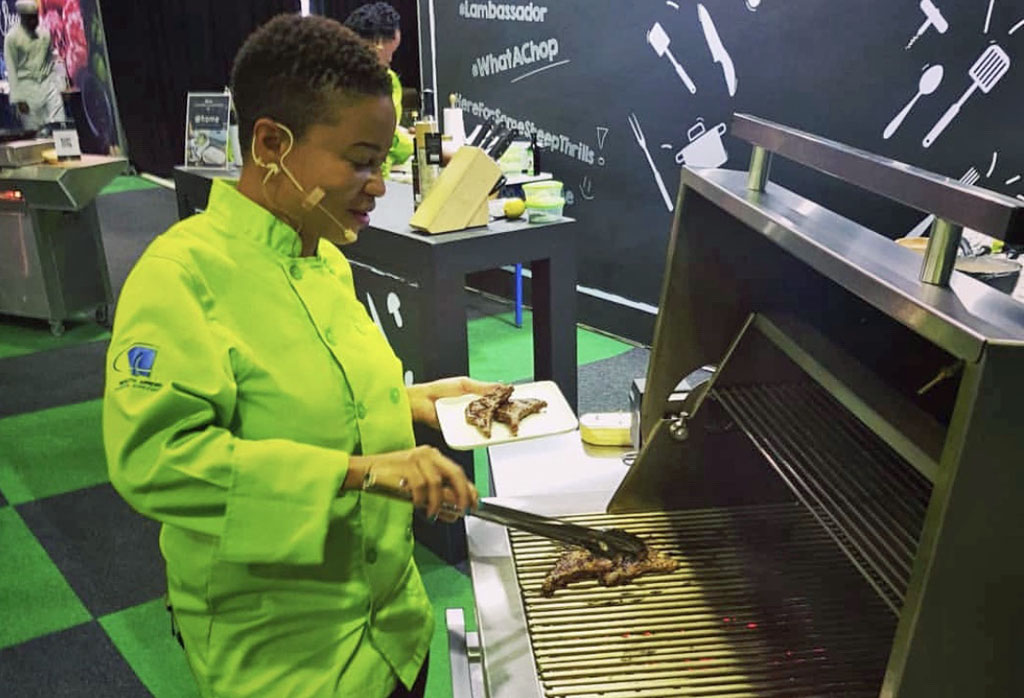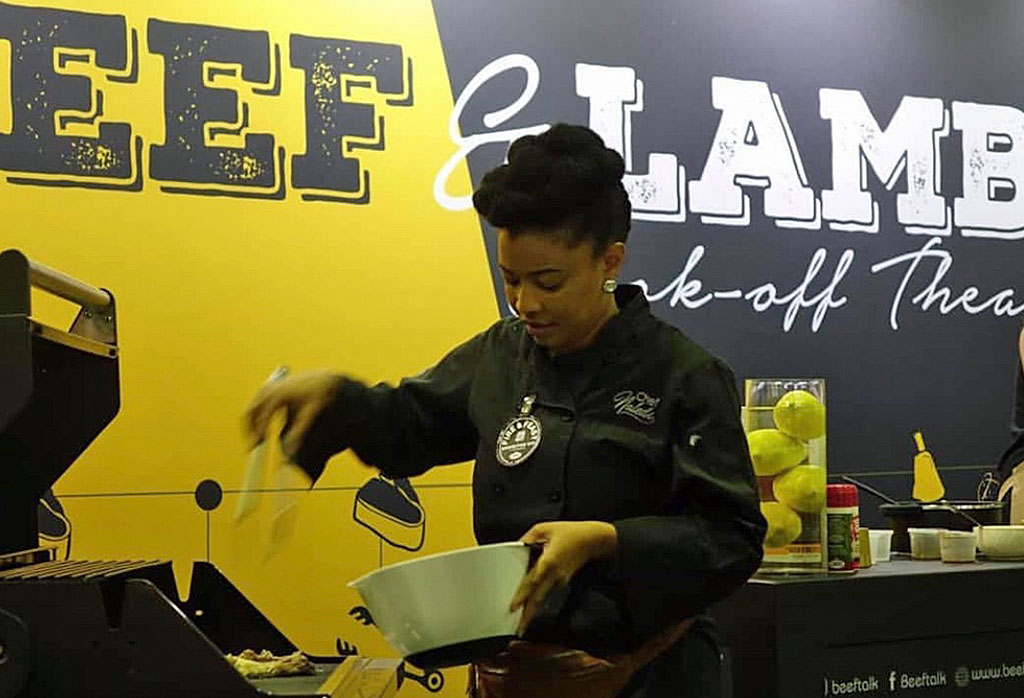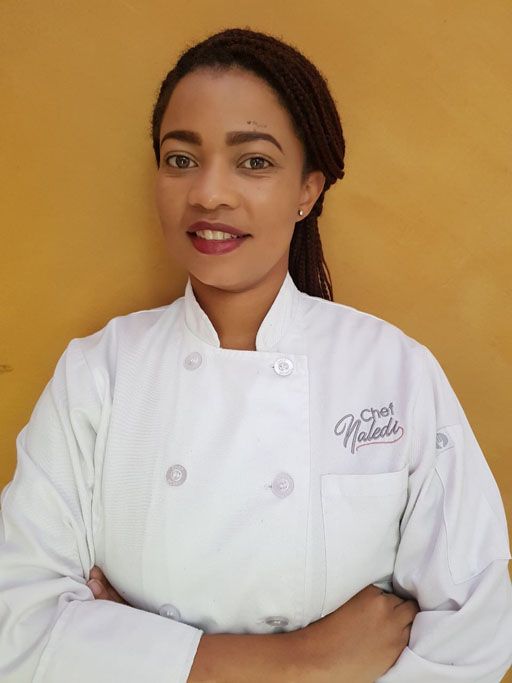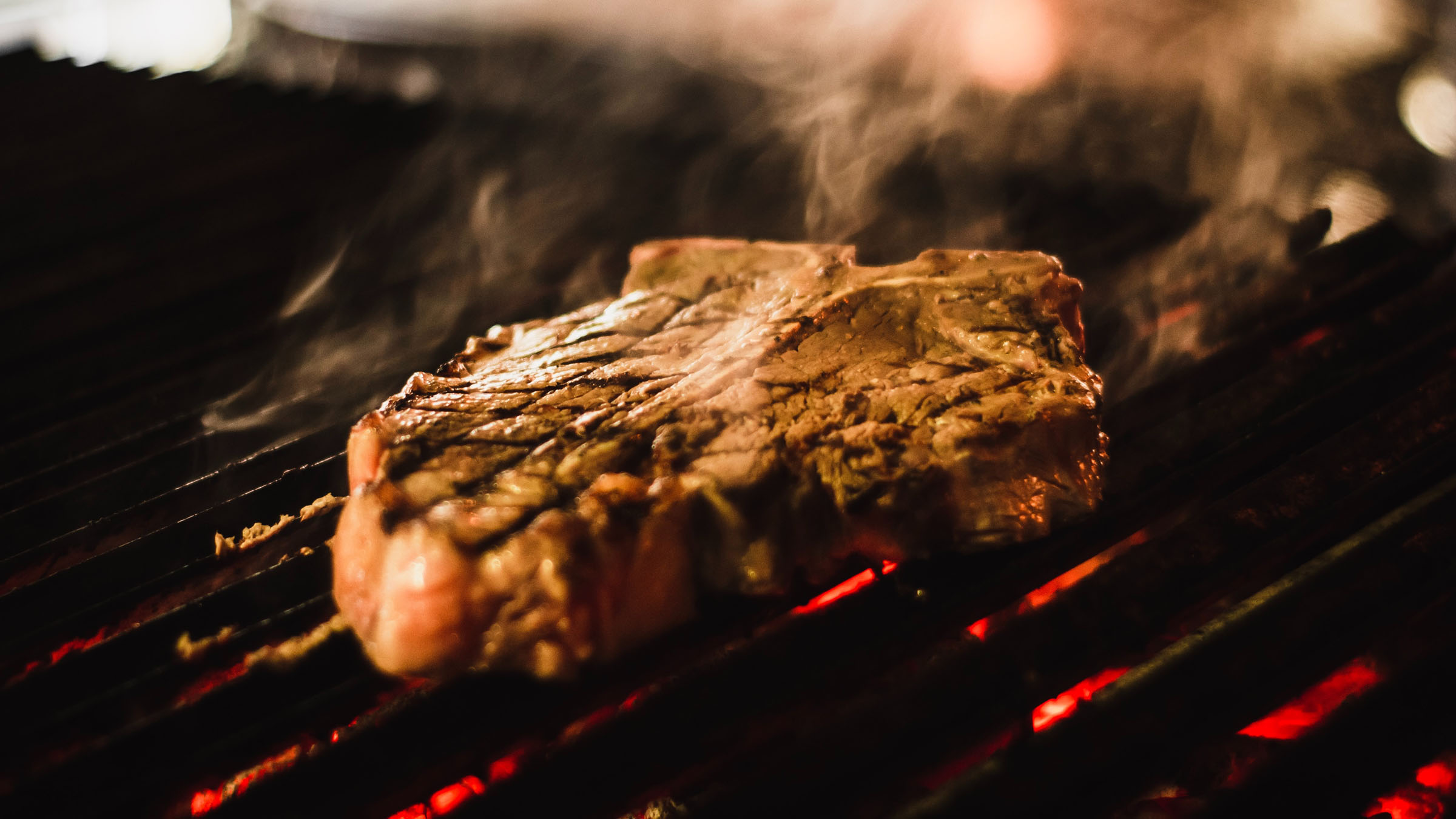Botswana-born, Pretoria-based Naledi Toona works as a private chef, culinary instructor and moderator. We sat down with her for a chat about braai, the South African equivalent of barbecue …but not quite, as she explains.
AMEX ESSENTIALS: Tell us about your culinary journey, how did you become a chef?
Naledi Toona: I came from Botswana to South Africa to study Business Management and Sociology at Nelson Mandela Metropolitan University. After a short corporate stint, I decided to open my own pie shop. I did a bit of catering on the side, but had no culinary qualifications. I was eager to learn more about cooking, as well as the science and business aspects behind it, so I went to culinary school.
Now I work as a private chef, and I also train domestic workers to cook, teaching them about health and hygiene. My latest and favourite project is teaching children’s cooking classes, which I also do online. Furthermore, I’m a brand ambassador for Lamb & Mutton SA, creating recipes and doing cooking demos at culinary festivals, such as the Fire and Feast festival where chefs strictly use open fire and grills. We demonstrate various grilling techniques and how to work with different heat areas on the grill.


South African barbecue is commonly referred to as ‘braai’. What is it?
A braai refers to the actual grill, traditionally made of a halved steel oil drum placed on top of an iron stand, with a grill rack on top. It’s also the name of the activity. ‘Braaing’ is common across Southern African countries and done by people of all subcultures; our Heritage Day, the 24th of September, is commonly referred to as ‘Braai Day’. It’s mainly an activity for celebrations or weekends nowadays, but it’s also very common in the informal culinary sector where you’d find a lot of roadside braais cooking up street food dishes such as chicken feet.
People in South Africa braai year-round. In fact, many houses now have built-in braais on their patios, as part of the entertainment area. You’d definitely think about where to place your braai when designing a house.
There’s a debate whether you should call it ‘braai’ or ‘barbecue’. Those who are into the science behind it say that the word ‘braai’ should be strictly reserved for grilling over burnt wood, but that is changing nowadays, because gas grills just make things easier. That said, I still prefer cooking over open fire. It’s quite a lengthy process: having to wait for the wood to burn down, so that there’s just coal left, before you can put the meat on. Although we do use firelighters to make things a bit quicker.

A braai is a bonding session. It dates back to ancient African culture, where families would sit around the fire in the evening, and tell stories and myths to the younger ones. There’s something about this that’s so different from sitting in the lounge or at the dining table. While we talk about everything that’s going on in our lives, this bonding happens.
When creating new dishes, do you use fire as an integral element of your cooking?
Definitely! Remember, electric and gas stoves are a recent invention; they’re not really a cultural thing. Fire has always been a huge aspect of Southern African culture. So even when you’re not grilling meat, you’d use a three-legged cast-iron pot, what we call a potjie pot, over a fire and all sit around it. During weddings and funerals, we prepare stews in these pots.
What would a braai at your household look like?
Nowadays there are many women working in the culinary industry, and female chefs do all the jobs that used to be reserved for men. That includes braai, which I often do for cooking demos. At home, the braai is still the men’s area though. My husband starts the fire, and the guys bond around the fire, while I take care of the marinades and side dishes with the women. When it’s just the four of us, we tend to braai together.
What does gathering around the braai mean to you?
A braai is a bonding session. It dates back to ancient African culture, where families would sit around the fire in the evening, and tell stories and myths to the younger ones. There’s something about this that’s so different from sitting in the lounge or at the dining table. While we talk about everything that’s going on in our lives, this bonding happens.
Dit bericht bekijken op Instagram
Dit bericht bekijken op Instagram
What are some of the dishes that you would prepare over fire?
We would serve lamb or pork chops, and boerewors, our traditional sausages, maybe some chicken wings or drumsticks. Veggies like sweet corn or veggie kebabs are also really nice, because they get that smoky flavour. I also really like to prepare ostrich steak, which tastes similar to beef. Some people are fans of certain offal types on the braai, such as gizzards and liver.
Do you have any spice mixes or rubs that you use?
I don’t make wet marinades for braai meats, but I use a variety of dry rubs and a little oil. Then at the end, when the meat is almost done, I brush some basting on both sides for extra flavour. The reason why I don’t use marinades is because they tend to have some sugar, and this causes meat to burn on the outside before it’s cooked. For the final basting, I mix different types of vinegars or lemon juice to get some acidity, and I get sweetness from homemade barbecue sauce and a bit of mild spice through a sprinkling chili flakes.
I share two of my favourite recipes here, one for lamb riblets, and another for pork chops.
Do you have any favourite drinks you enjoy while having a braai?
Most people drink beer with braai, such as a Castle Lager, but I enjoy drinking red wine. A medium-bodied Merlot goes really well with the mildly spiced meat dishes.














Sorry, the comment form is closed at this time.